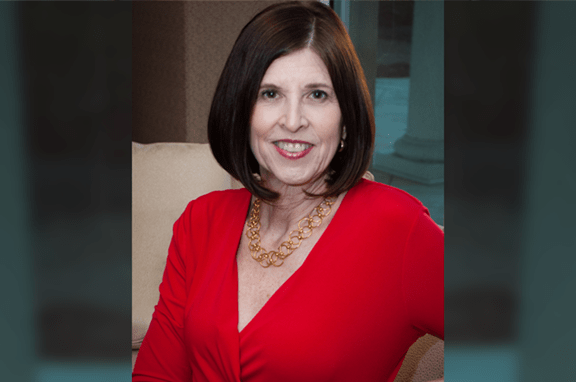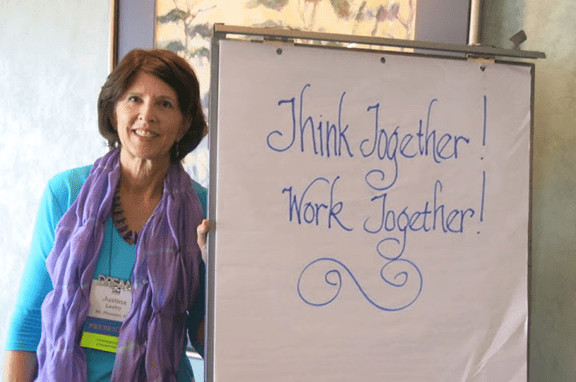Media


The Power of Dreams
BY DAVID QUICK
‘Dream groups’ provide insight into mysterious images of the sleeping mind
Like many people, attorney Mike Ethridge long has been fascinated by his dreams, some of which have been so vivid and memorable that he carried the mysterious images of them in his mind for years.
But it wasn’t until he attended a workshop on dreams led by Mount Pleasant resident Justina Lasley more than a year ago that he realized he truly could tap into his dreams and use them in his conscious life.
Ethridge was so intrigued that he started meeting with Lasley for individual sessions and then joined a “dream group,” consisting of three or four other individuals and Lasley as a “facilitator.”
In dream group sessions, individuals reveal their dreams, often logged in dream journals. Dreams are not “interpreted.” Rather, a facilitator offers expertise, pinpoints emotions involved in the dream and keeps the discussion on track, while group members offer insights into the dream from the standpoint of “if it were my dream.”
Lasley stresses that involvement in a dream group is not psychological therapy, though it certainly can be therapeutic.
Licensed professional counselor Robin Joseph of Charleston, who has participated in one of Lasley’s dream groups, can attest to the varied levels of training therapists have with dreams. Joseph thinks much can be learned from dreams, but they remain a largely untouched resource.
“When I’m counseling with people, I feel like we’re peeling away layers of onion to get to the issues,” says Joseph.
“I was amazed how dreams went to the core of your issues. It bypasses all of the fluff. … As a therapist, I believe we are emotional beings. I think everyone should be doing something for their mental health because life is tough. Working with dreams is one nonthreatening way of doing that.”
For Joseph, Ethridge and other recent Charleston area dream group participants, being a part of one has been a life-changing experience.
“It has enabled me to look inside myself and uncover who I am and live more authentically. There’s nothing else I’ve engaged in that done so much in that way,” says Ethridge, 45, who has a wife and two children.
“I have made some life changes as a result. Nothing really big like quitting my job and sailing around the world. … On the surfaces, I’d say the changes are subtle, but that they will be dramatic years down the road.”
One specific change, however, is that Ethridge will be among the first 10 participants in the recently formed Institute for Dream Studies, founded by Lasley in Mount Pleasant.
Lasley, who has a master’s degree in transpersonal psychology from the University of West Georgia, has worked with dream groups for 15 years and is the author of “Honoring the Dream: A Handbook for Dream Group Leaders.”
By writing the book and founding the institute, Lasley has changed her primary goal from leading groups to teaching others to lead groups.
A personal journey
Lasley first was introduced to dream work in Atlanta in 1990. Dr. Jeremy Taylor, author of “Where People Fly and Water Runs Uphill,” had visited her church, Trinity Presbyterian, and her minister subsequently started a group that met weekly in the church parlor. “I always felt like dreams had meaning, but because I grew up in an engineering family, there wasn’t much room for talk about ethereal dreams, feelings and emotions. I was thrilled when I found out there were people who actually sat down and talked about dreams.” She recalls the first dream she brought to the group and how someone helped shed light on it:
“Somebody was on the back of a wagon and yelling, ‘Lord and tailor, lord and tailor.’ I immediately wrote it down as the store, Lord & Taylor. But someone in the group asked me, ‘Who’s the lord and who’s the tailor?’ I thought, ‘Oh, my gosh.’ I knew it was about my family. My father was the lord of the family and my mother was a tailor. “It’s a perfect example of how it can be hard for us to get our own meaning from our dreams.”
Besides going from dream group participant to a leader, Lasley says working with dreams has enriched her life, making her realize that her time spent being a perfectionist was not bringing her joy and self-esteem. “I began to see and feel my inner strength. I quit having to do things to prove myself, and I didn’t have to look to other people to find my worth,” she says, recalling the evolution occurring in her early 40s. “I started being more honest with my family. I got grounded. … Dreams gave me courage.”
That courage included taking a train trip from Moscow to Siberia in 1998, moving from the known of Atlanta to the unknown of Charleston, writing her book and founding the institute.
“I’ve done some amazing things changing my life. I’ve jump off a lot of cliffs, and my dreams have asked me to do that,” she says. “We cannot make changes in our lives until we are aware. We cannot understand without awareness, and dreams bring awareness.”
Dream study goes public
Over the ages, humans around the globe have talked about their dreams and sought ways to understand and apply them to their conscious lives.
For the most part, modern Western cultures have ignored dreams, leaving the serious pondering of dreams to the couches of psychoanalysts’ offices. That was the case until about 25 years ago, when a handful of dream workers in California founded what is now the International Association for the Study of Dreams. The group brought together an array of professions and interests that find the potential for human growth through dream study, including artists, doctors, educators, clergy, as well as psychologists who typically don’t receive extensive training in working with dreams.
The 600-member, multidisciplinary organization, which publishes a quarterly journal and holds an annual conference, actively seeks to encourage research and promote the use of dreams as a source of inspiration, guidance, creativity and healing. In doing so, the association spotlights a field of oneirology, the exploration of dreams, which gets relatively little academic funding for research.
The organization also has helped spawn thousands of dream groups around the world.
Collective unconscious
One of the reasons dream groups work so well, Lasley says, can be explained through Carl Jung’s theory of the collective unconscious, which is basically the notion that part of the unconscious has a connection to all of humanity and contains archetypal images or symbols shared by people of all cultures. As humans, we all carry an inherent knowledge.
As group members provide insight to the images of a dream, they may shed light on a part of it for the dreamer, who then can understand it better.
One fascinating result is that a dream group, often made up of total strangers, bonds immediately.
“No group forms as quickly as a dream group,” insists Lasley. “I will take five people who do not know each other, and at the end of two hours, they are so close they would die for each other. That’s the power of the dream. It’s connected to that human collective unconsciousness … that common thread of humanity in each of us. “Your dream becomes my dream, and we begin to honor each other and see the sacred nature of it.”
Remembering dreams
Some people believe they don’t dream, yet laboratory studies show that most people dream about six times a night. The most vivid dreams come during sleep segments of “rapid eye movement,” or REM, when the brain is very active, the large muscles of the body are relaxed, and the eyes move back and forth under the eyelids.
The following are tips, suggested in “Honoring the Dream” by Justina Lasley, for recalling and recording dreams:
–Before going to bed, intend to remember your dreams and place recording materials by your bed. You can either write dreams down or record information on a tape.
–Write down anything you remember, even it’s just one word, emotion or physiological response.
–Go to bed a little earlier than usual.
–Avoid taking unnecessary medications before bed, such as antihistamines. Vitamin B6 may increase recall.
–Resume the sleeping position you were in while dreaming. It’s usually your favorite, most comfortable position.
–Upon awakening, lie still with eyes closed and review the night’s dreams. Once you enter linear thinking – such as thinking of all the tasks that lie ahead – your dream world is left behind. Dream experiences fade quickly.
–Transfer any notes or transcribe recordings in a dream journal immediately.
–A journal entry should include the date, a title for your dream, identify the basic emotions of the dream and write out the narrative of the dream story. Other aspects to consider are physiological symptoms, a synopsis of the previous day’s activities and consider sketching parts of your dream.
Getting involved in dream work
Also, Lasley frequently offers workshops at The Center for Women, the Phoebe Pember House studio, both in Charleston, as well as the Springbank Spirituality Center, located in Kingstree.




